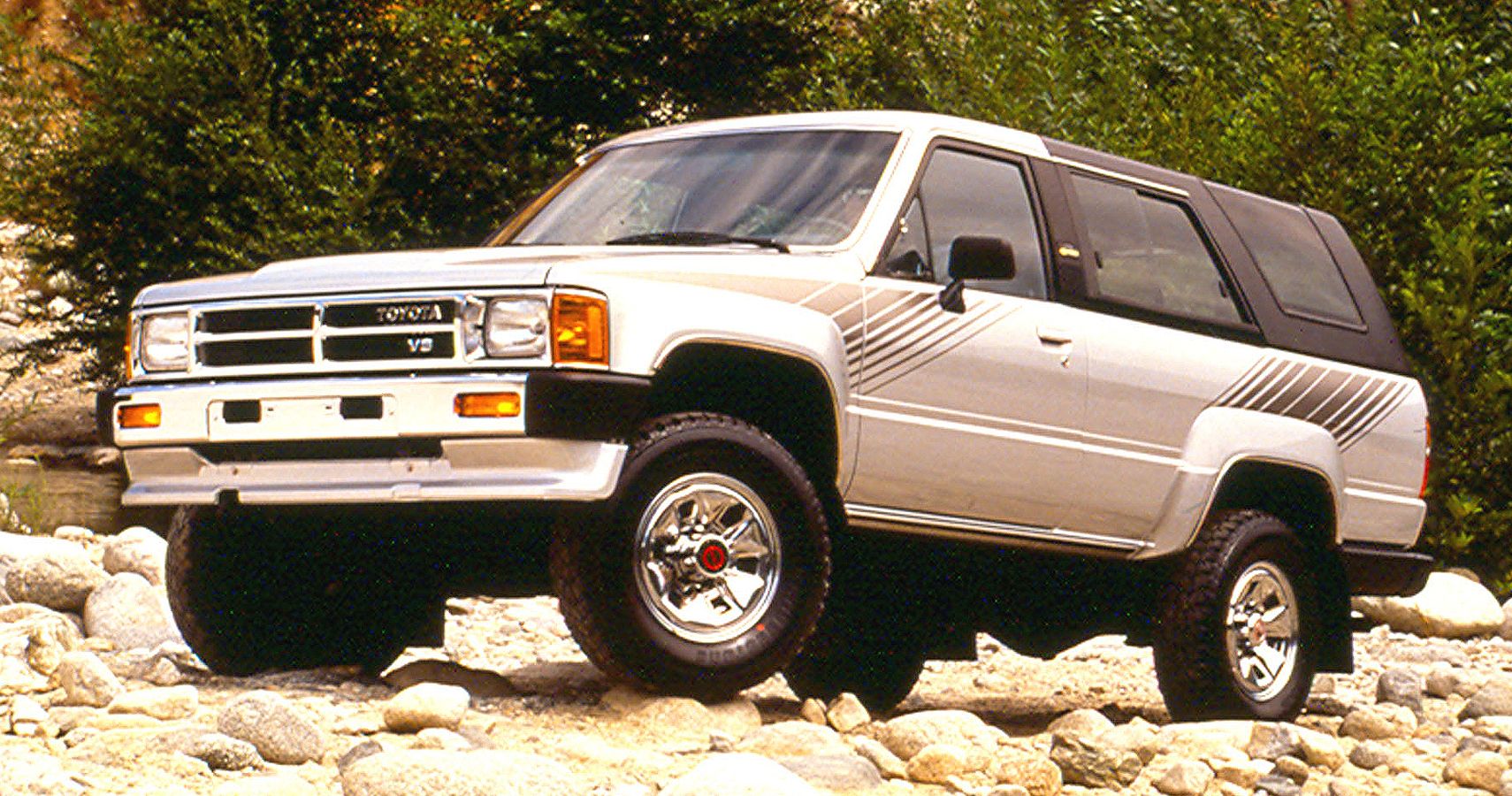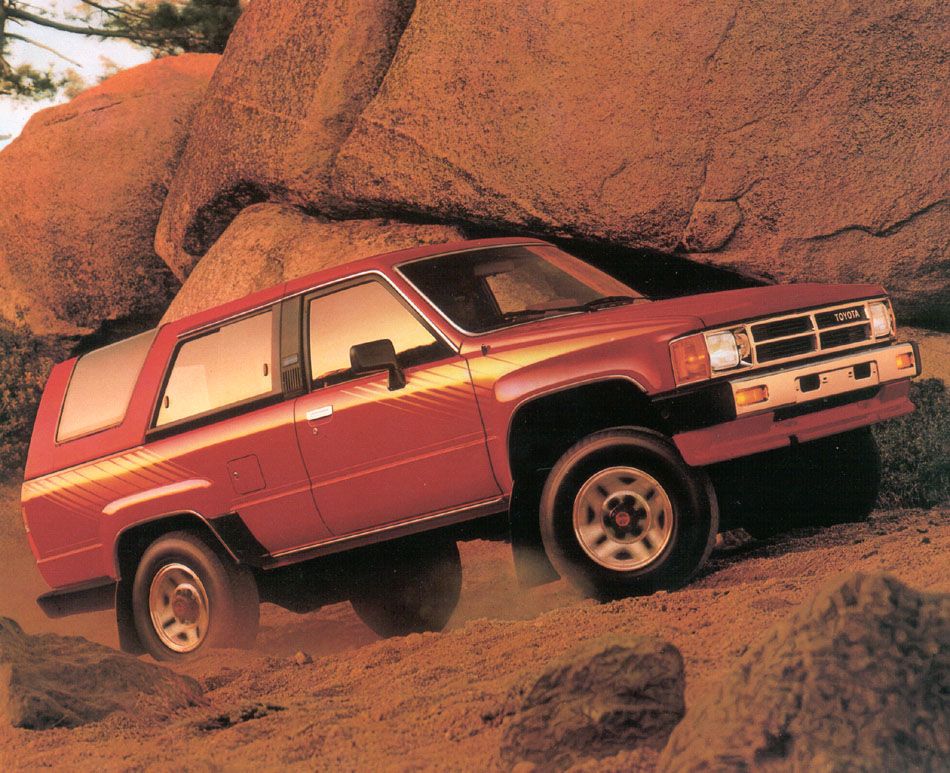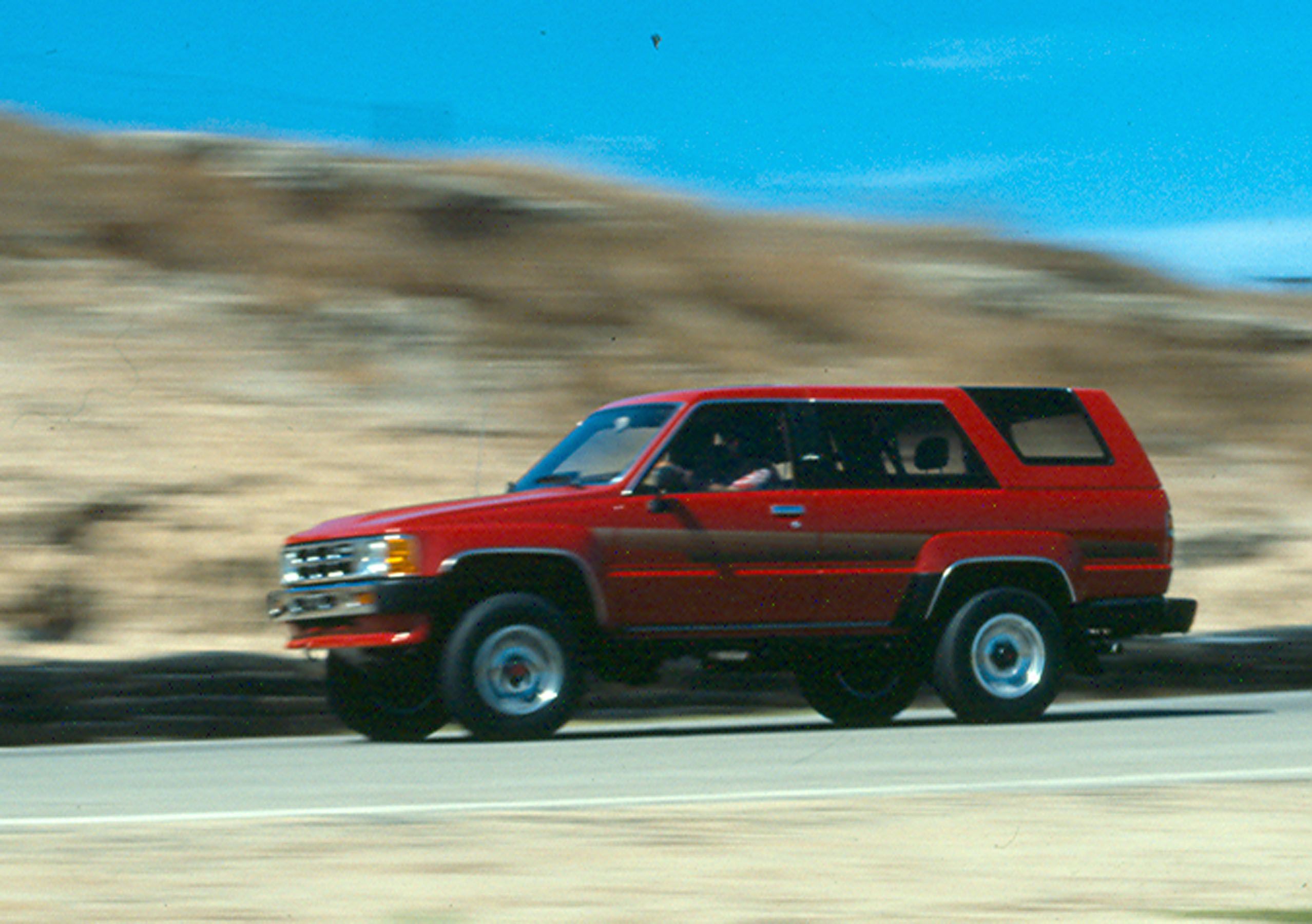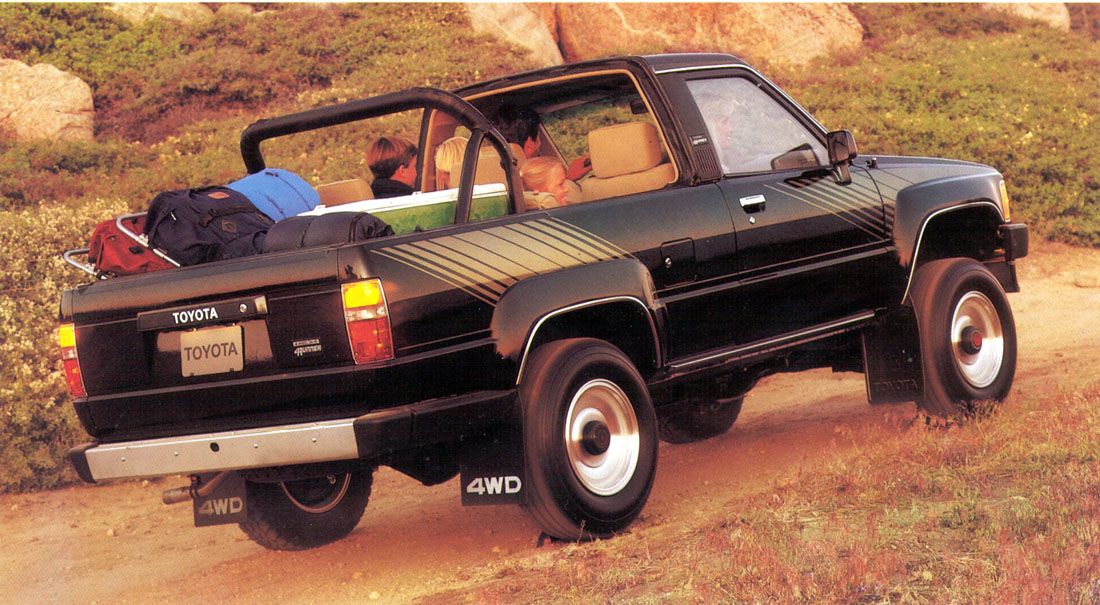SUVs of the past typically don’t conceive from a ground-up design with a fervor toward convenience. Rather, they’re trucks first and commuters second, far from the crossover world that demand the best in practicality and refinement today.
Toyota is no exception. They took a modified truck chassis and shrunk it down as an alternative option to the Toyota Land Cruiser, whose price is too big for some folks to swallow. Little did they know they would create one of the best off-road instruments of all time.
Let’s dive into why and what you can expect from the first-ever Toyota 4Runner.
Toyota 4Runner
- Removable fiberglass canopy
- Turbocharged and V-6 options available
- Trim: SR5
- Engine/Motor: 2.4-liter inline-4, 3.0-liter V-6
- Horsepower: 100 - 150 horsepower
- Torque: 128 - 180 lb-ft
- Drivetrain: Rear-wheel, all-wheel-drive
- Transmission: 5-speed manual, 4-speed automatic
- 4-cylinder reliability
- Turbocharged performance
- Available manual transmission
- Relatively inexpensive to buy
- Live front axle can make it topsy turvy
- V-6 engine issues can occur
How The Toyota 4Runner SUV Came About
Yes, the story of the 4Runner begins here; as an improvised chassis on a global Hilux platform that had just debuted for the international market, putting US buyers last. Toyota had been selling pickup trucks in North America for years but always under a generic name. In the 1980s, Americans knew it, rather anonymously, as the "Toyota Truck’ or ‘Toyota 1 Ton."
At the time, the company saw the newest trend in trucks; bypassing CAFE emission standards to create passenger vehicles as long as they were high enough off the ground and featured four-wheel drive. Basically, carmakers were exploiting a loophole pertaining to light-duty trucks that if they met both requirements, fuel mileage standards were less strict.
Companies took advantage of this, such as the Chevrolet K5 Blazer and later-gen Ford Bronco in that 1970s/early 1980s period. The commonality was an existing truck platform that adjusted to take on additional roof support. A bench seat for rear passengers was then added. Either were removable and could utilize a truck bed if needed.
This line of thinking reached Toyota. It may be late to the party, but it saw the potential to fill a gap that was smaller than the Blazer. Which is where the Hilux came in. Following the formula, they converted the pickup into a makeshift SUV with a removable fiberglass hard-shell cover and thus, the 4Runner was born.
The First Toyota 4Runner Was Not A Normal SUV
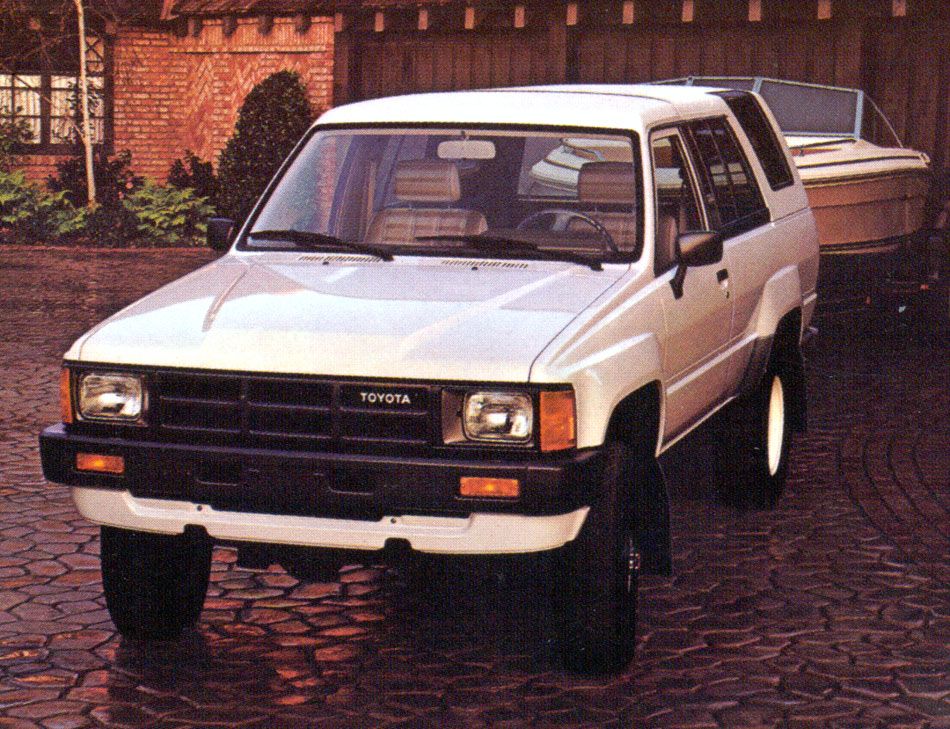
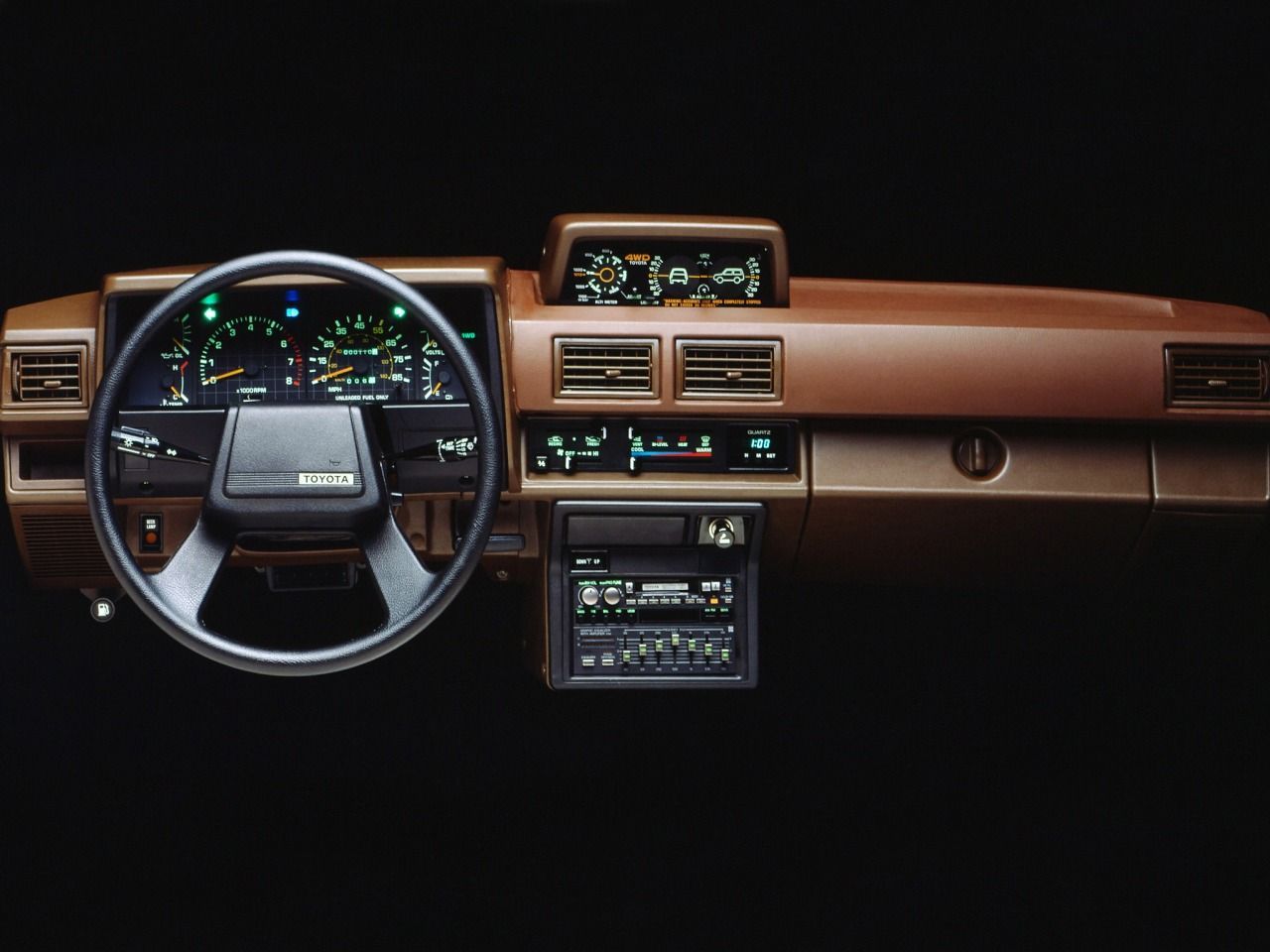
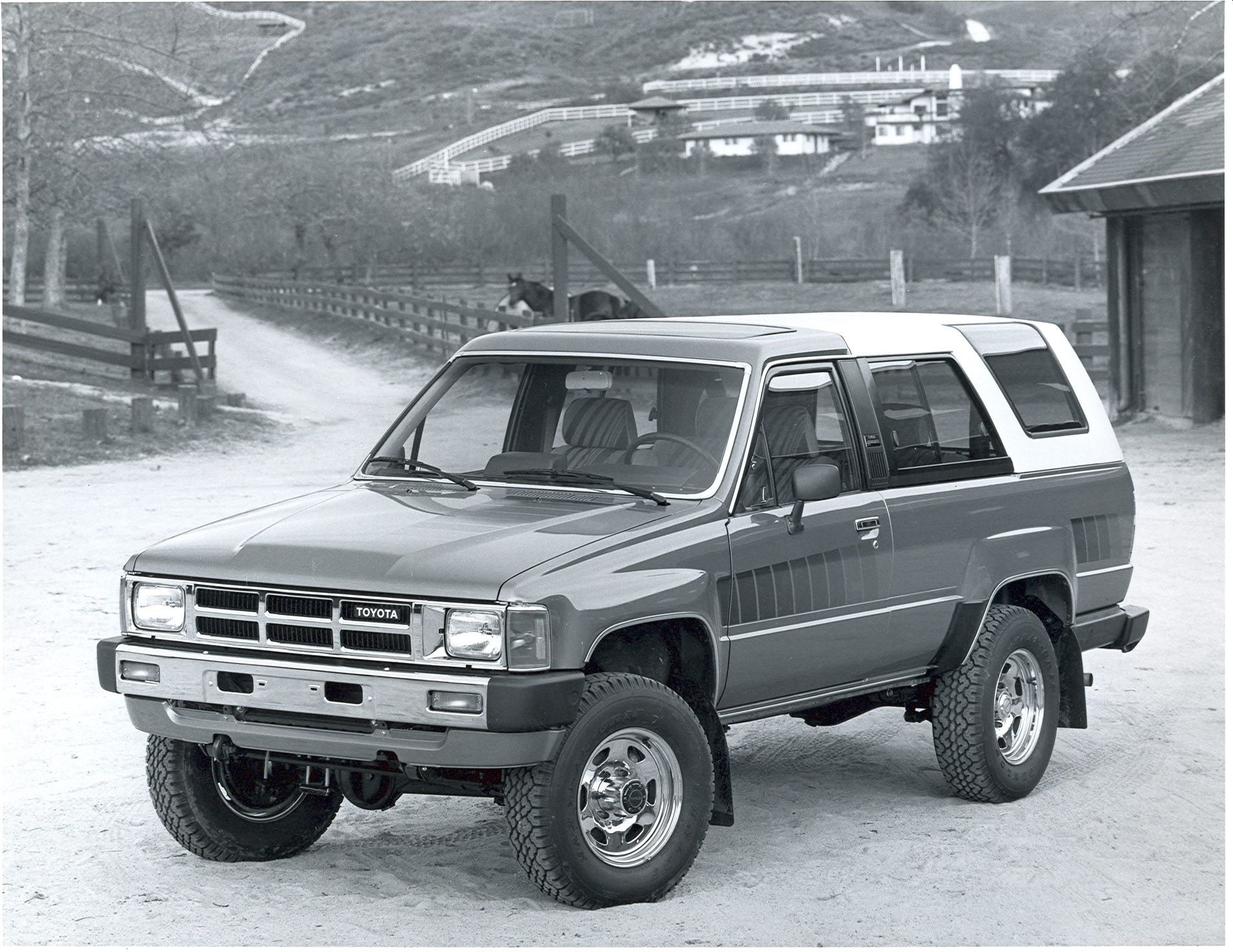
Codenamed the N60, It was still a ladder-frame chassis but the biggest engine available was a 3.0-liter V-6. No gas-guzzling V-8 unlike its American counterparts, it doubled as a compact SUV that could turn into a light convertible pickup truck in mere seconds. Its smallish footprint meant it was more in line with the Jeep Cherokee XJ that had also debuted in 1983. Realistically, the first 4Runners split the difference between an XJ and Wrangler-predecessor CJ-7, an updated WW2 design.
And so, the 4Runner's love affair with Americans began that continues to this day. That's why you can buy a 2023 4Runner new when it was last designed in 2009. But the most collectible remains the ones when a 4-cylinder was available pre-2000. And only from 1984 to 1989 could you get it in the peculiar convertible-pickup-SUV hybrid like the ones in the picture.
The early 4Runners provided two ways of shade for rear passengers. The first is the aforementioned removable canopy naturally integrated behind the front doors. Even better, you got window flaps for a bit of extra air! To remind you that you're not just riding on a bench with no surrounding support beside lap belts. A bolt-on cage sits on the bed for additional head protection.
The second kind of shade was a cloth top that stretched at least as far back as that cage. Various aftermarket accessories allow for shade to the back end of the vehicle. With the hard shell removed, the 4Runner suddenly seemed like a natural competitor to the Jeep Wrangler, which replaced the CJ-7 in 1986.
Toyota 4Runner Bulletproof Engine Options
For the US market, 4 engine options came and went throughout the 4Runner's production cycle. For its first year in production, the standard motor was a 2.4-liter 22R carburetted inline-4. Transmission options were either a 5-speed manual or 4-speed automatic. In 1985, fuel injection, dubbing the 22R-E, took place in lieu of a carburetor to provide more power, up to 116 hp from 100. The former was still available until 1988.
For 1986, a turbocharged option was available for the 2.4-liter engine. This was only available with an automatic transmission. A tougher rear differential was also added to put power to the ground. Power suddenly jumped to 135 hp and 173 lb-ft of torque, up from 136 lb-ft in the non-turbo version.
The most crucial change for 1986 was the switch from a solid front axle to a setup of independent front suspension. This was a significant improvement for two reasons; one being that independent suspension gives more on-road stability as well as off-road clearance thanks to a wider track that made the 4Runner even more capable when hitting the trails. The second reason is that the suspension changes allowed Toyota to introduce putting a bigger engine in it for the first time in 1987.
This was the 3VZ-E 3.0-liter V-6 that replaced the turbocharged inline-4 for 1988. It produced 150 hp and 180 lb-ft of torque. Although the power improvement was welcome, these engines started to see issues that earned the particular V-6 a reputation that's less than stellar.
A cast iron block does wonders for motor durability. But the caveat is Toyota then went ahead with an aluminum cylinder head, compromising the strength of the head gaskets. Thus, if pushed hard enough, your Toyota V-6 engine would go kaboom. Safe to say, if you find yourself in the market for a 4Runner, stick to your guns in finding one equipped with a 4-cylinder.
Toyota 4Runner Equipment And Value
Regardless of engine choice, an SR5 package was available to upgrade your 4Runner experience. This came in the way of bucket seats, a more comprehensive instrument gauge cluster, center console heater, and more door trimmings. An inclinometer also sat atop the dashboard which is useful for tackling steeper trail heads.
As with everything else, prices on N60-gen 4Runners are going up. But not terribly so. Auction sites see them go between $20k and $30,000 for a decent example hovering around 100,000 miles regardless of engine. Even V-6 models are holding their value, with one bidder putting $42,000 down for a 1988 SR5 example in mint condition.
The most sought-after motor remains the turbocharged inline-4, which has seen solid reputation for reliability and overall performance. The fact that it was only produced for a couple of years means it's also the rarer find.
Like the Land Cruiser, there is no wrong 4Runner as long as you're willing to fork over the cash. The 4Runners that came subsequently have since adapted the traditional SUV shape with a trunk hatch design, meaning Toyota saw fit to pour more money into the project. They didn't pool resources just like Jeep had done with Renault to create the Cherokee XJ, the world's first utility vehicle on a unibody chassis.
Instead, it was an experiment that was a hit. The 4Runner, which is known as the Hilux Surf overseas, cemented its status in a few short years for Toyota to keep going. Although the one we know and love today is what's considered old-school, the 4Runner with the removable canopy remains unique.

